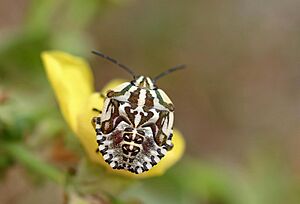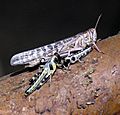Nymph (biology) facts for kids
- For the spirit, see nymph
In the world of zoology, a nymph is the young form of certain invertebrates. This term is mostly used for young insects. Think of it as a baby insect that is still growing up.
Insects grow through a process called metamorphosis. There are two main ways insects change as they grow. One way is called incomplete metamorphosis. This is where nymphs come in!
Contents
Incomplete Metamorphosis: The Nymph's Journey
When an insect goes through incomplete metamorphosis, its egg hatches. Out comes a tiny nymph. This little nymph often looks a lot like the adult insect. However, it is much smaller and usually doesn't have wings yet.
Nymphs do not have a pupa stage, like a cocoon. Instead, they simply grow bigger and bigger. As they grow, they shed their outer skin. This process is called moulting. Each time they moult, they enter a new stage of growth. These stages are known as instars. After several moults, the nymph finally becomes a full-grown adult insect.
Aquatic Nymphs: Life in Water
Some insects have nymphs that live in water. These are called aquatic nymphs. They can look quite different from their adult forms. For example, the nymphs of dragonflies live in water. You might find them in lakes or rivers.
Aquatic nymphs are sometimes given a special name: naiads. They spend their early lives underwater. Then, they climb out of the water to transform into their flying adult forms.
Insects with Nymphs
Not all insects have a nymph stage. Only those that go through incomplete metamorphosis do. Insects that use complete metamorphosis do not have nymphs. Instead, their young are called larvae, and they change into a pupa before becoming adults.
Some common insects that have nymphs when they are young include:
Images for kids
-
Two Schistocerca gregaria nymphs beside an adult
See also
 In Spanish: Ninfa (biología) para niños
In Spanish: Ninfa (biología) para niños



